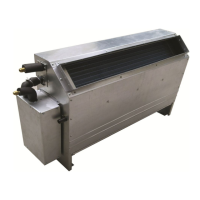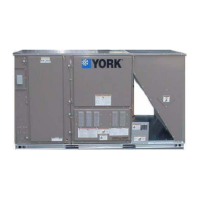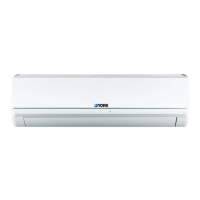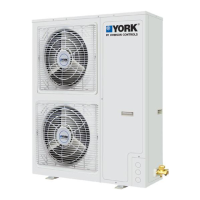30
JOHNSON CONTROLS
FORM 145.05-NOM1 (708)
WATER PIPING
General
Piping must comply with local plumb-
ing codes and ordinances.
Due to the variety of piping practices, it is advisable to
follow the recommendations of local authorities. They
can supply the installer with the proper building and
safety codes required for a safe and proper installation.
The water piping should be installed with a minimum
number of bends and elevation changes for best
performance. Piping should contain:
1. Vibration eliminators to reduce vibration and
noise transmission to the building.
2. Shutoff valves to isolate the unit from the piping
system during unit servicing.
3. Manual or automatic air vent valves at the high
points of the system.
4. Some means of maintaining adequate system
water pressure (e.g., expansion tank or regulating
valve).
5. Temperature and pressure indicators located at
the unit to aid in servicing.
6. A strainer to remove foreign matter from the
water before it enters the pump. It should be
placed far enough upstream to prevent cavitations
at the pump inlet (consult pump manufacturer
for recommendations). The use of a strainer
will prolong pump life and help maintain system
performance.
7. A strainer to remove foreign matter from the
water before it enters the unit.
8. Size piping to minimize system pressure drop.
9. All piping must be supported independent of the
unit.
10. To aid in service the unit should have a union in
the water inlet and outlet water lines.
Condenser Connections
1. Units may be specified with water and condensate
connections on either the left or right side of the
unit.
2. All condensers are factory piped for a common
condenser water supply and common condenser
water return connection.
3. Field piping connections are made to factory
piping connections located on the unit submit-
tal drawings. The piping connections are run to
the outside of the unit cabinet. Connections are
located behind a factory mounted shipping cover.
All connections are copper sweat connections as
indicated on unit dimensional drawings.
4. Supply and return water connections must be
made at the proper locations as indicated by the
dimensional drawings.
Supply (water in) connection is always
the lower connection.
5. Units with factory mounted waterside econo-
mizer should not require head pressure control.
The economizer will typically elevate the water
temperature by 5 to 10° F before entering the
condenser, allowing suitable condenser water
temperatures whenever the tower supply tem-
perature is 50° F or higher.
6. Head pressure control must be provided if enter-
ing condenser water temperatures will go below
45° F.
• Fan cycling and or modulating discharge
dampers on the cooling tower are often used,
or a three-way bypass around the tower to
maintain condenser water temperature. Cool-
ing tower control to maintain the temperature
> 45° F is generally more cost effective if
multiple units are in the loop.
Installation

